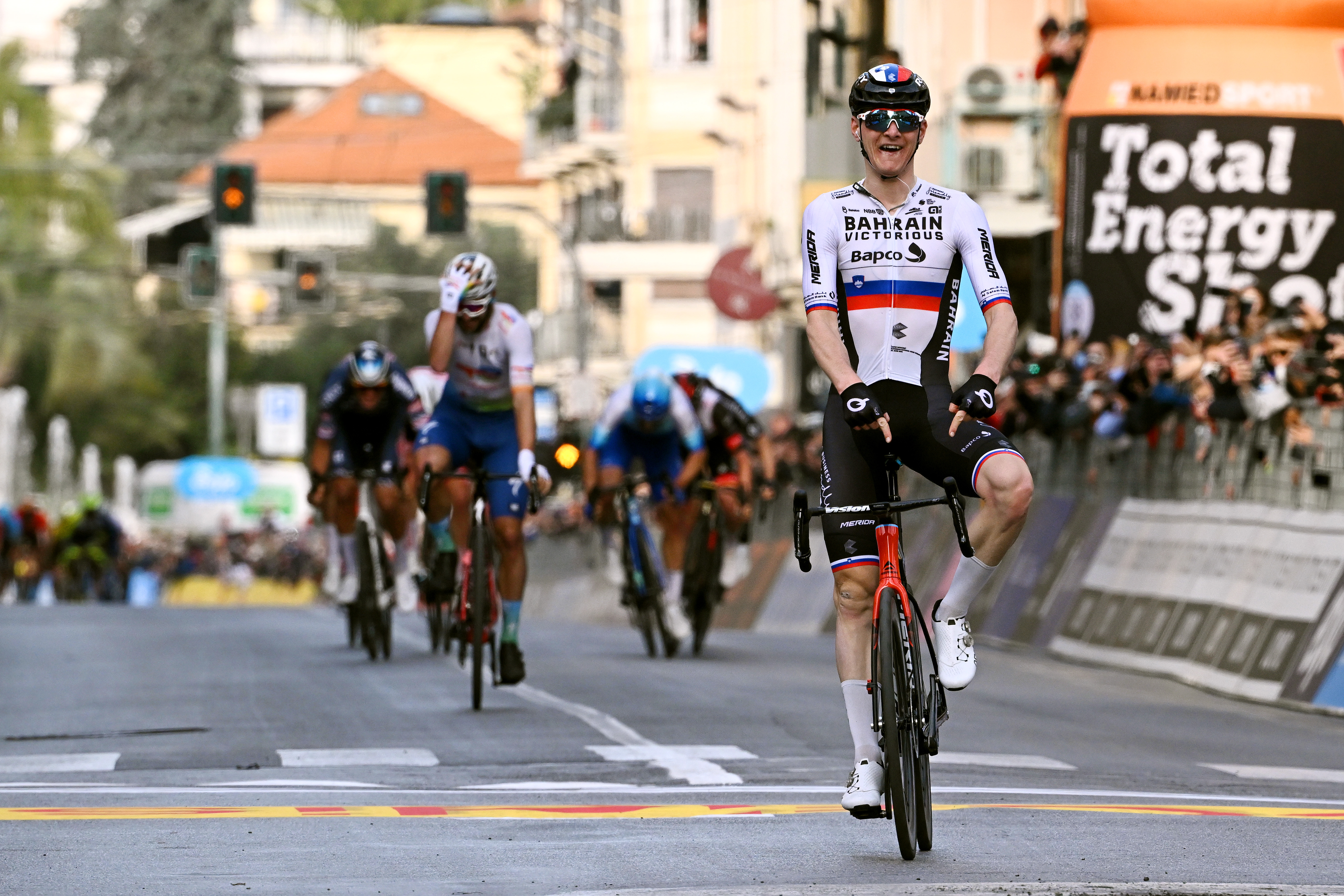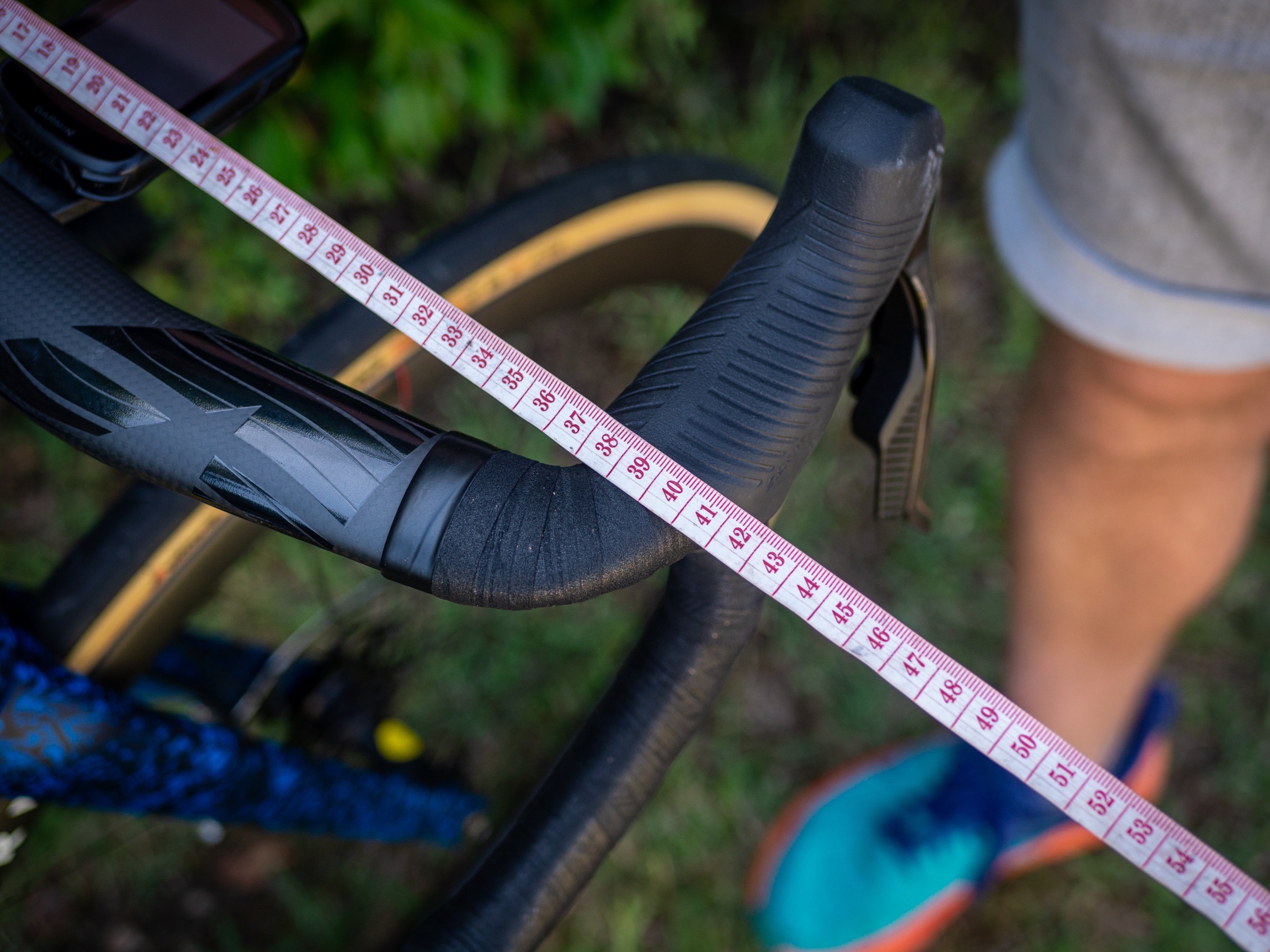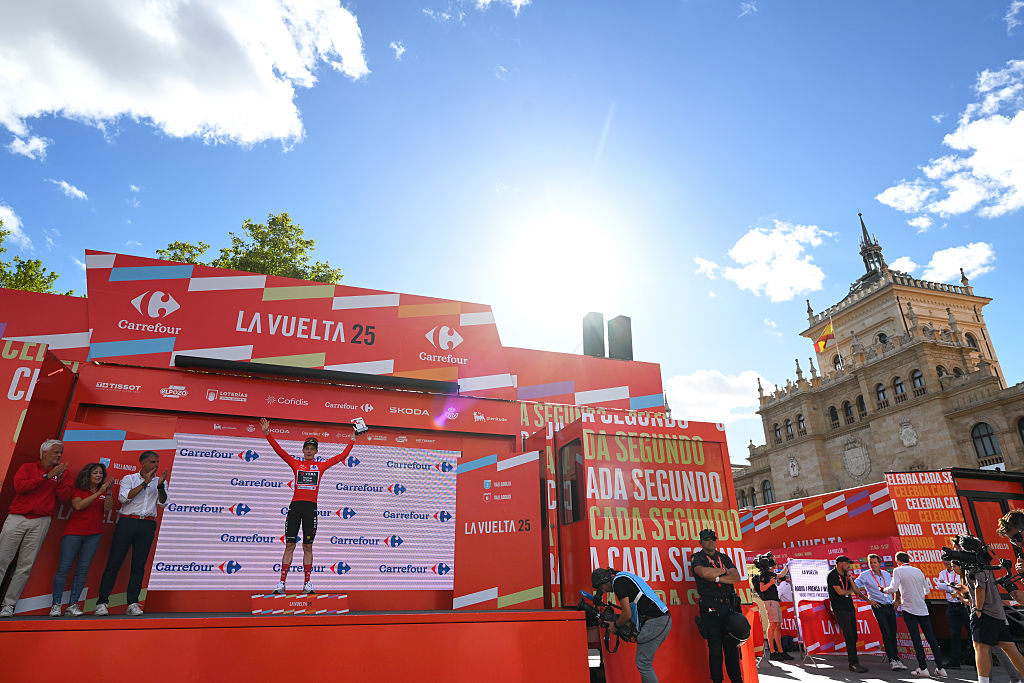Safety in the spotlight: Are the UCI's new rules doing more harm than good?
2025 has seen the UCI introduce and propose a number of changes aimed at making professional cycling safer, but many of their ideas have attracted major backlash. Cyclingnews investigates the initiatives and issues at play to see if the UCI is looking in the right places…

The issue of safety has dominated professional road cycling since the tragic deaths of Gino Mäder at the 2023 Tour du Suisse and Muriel Furrer at the 2024 UCI World Road Championships. The sport’s international governing body has reacted by rolling out a series of initiatives that have been met with a mixed reaction, as critics contest that their reforms are too slow, inconsistent and even illogical.
Dan Bigham, head of engineering at Red Bull-Bora-Hansgrohe, went so far as to say that without effective safety measures, the sport is close to its 'Formula 1 Ayrton Senna moment'.
"Roland Ratzenberger died, and no-one noticed. A day later, Ayrton died and it changed everything," he told the audience at this year’s Science & Cycling Conference in Lille, France, his point being that the sport cannot wait for a superstar like Tadej Pogačar to be seriously injured or worse before taking serious safety steps of change.
It begs the question, is stinging criticism of the UCI warranted, or, in a sport that thrives on speed, are they in an untenable position?
Gear ratio consternation
The Tour of Guangxi is off the radar of many and, in athlete circles, is arguably seen as a cool-down into the off-season. The six-stage Chinese race takes place in October, with past winners including Tim Wellens, Enric Mas and last year’s victor, Lennert Van Eetvelt of Lotto. However, this year Guangxi holds special significance as it will double as a test event for the main source of Bigham’s ire in Lille: maximum gear ratios. More specifically, restricted gear ratios, which the UCI says will limit extreme rider speeds that they deem a safety risk factor. The equivalent of 54 x 11 (10.46 metres per crank revolution) is the ceiling, presenting a groupset stumbling block for SRAM and its common 54-tooth and 10-tooth pairing.
Bigham was scathing of this proposed change in Lille, undertaking his own analysis and presenting his results to the onlooking auditorium of academics and teams' support staff.
"It’ll impact on as little as 0.01% of a race and will arguably reduce speeds by no more than 0.5km/h," he said. "All of this to change an entire groupset design? It really doesn’t seem effective to me."

Bigham isn’t the only Brit who’s not a fan of the mooted changes. Ahead of the Arctic Race of Norway, Tom Pidcock suggested limiting gears would actually make the sport more dangerous. "If we’re all going at the same speed, we’ll be closer together, and on descents that means we’ll take up more of the road," the Q36.5 rider said.
It would also clip Red Bull-sponsored Pidcock’s wings as the Brit is one of the strongest descenders in the peloton. His descent of the Galibier at the 2022 Tour de France has been watched nearly a million times on TNT Sport’s YouTube channel, highlighting the difficult balancing act the sport has in juggling speed on one side and rider safety on the other.
Seeking a SafeR sport
Since June 2023, the UCI’s efforts to achieve this balancing act have fallen under the umbrella of SafeR, a cross-body safety committee and working group, albeit it’s only this year that it’s become fully functional and operational.
Professor Dr Steven Verstockt leads the sports data science team at Ghent University and has worked with the UCI for several years with the aim of creating a safer sport.
"A few years ago, I was helping a company called RouteYou with things like route evaluation and scoring," he says. "I then thought that we could assist the UCI in understanding more about why and where incidents happen.
"At the time, they had no database on race incidents, so that’s where we started. After, we built an automatic tool based on things like dash-cam footage and GPX data of the parcours and used it as a basic screening tool to flag up the riskier segments of a race. That was the start of our involvement a few years back, which has since evolved into the SafeR initiative."

Verstockt attended Bigham’s session in Lille, even referencing it in his own presentation 24 hours later. "I didn’t agree with everything Dan said, and we discussed some things after, but fundamentally, he was right when he pointed out that we must make objective decisions based on sound data. And that’s what we’re looking for at test events like Guangxi."
"Take the variable of speed," Verstockt adds. "We want to be able to link rider data to the incident database so that we can be 100% sure at what speed they were riding at before the crash. We can then see if speed is actually the real problem or something else. If you don’t do that, it’s just an opinion, and there are a lot of those in cycling. But if it’s not tested, it’s not evaluated. And in order to test it, you need the data."
Tracking rider safety
So, the Tour of Guangxi is ostensibly a data-gathering exercise. This data gathering has also taken place at both the men’s and women’s Tour du Suisse and the Tour de Romandie Feminin, and will take place at the 2025 UCI Road World Championships in Kigali, Rwanda, in September. However, at these events, the safety initiative is on rider tracking, not gear ratios.
At these events, a tracker by Swiss Timing is on test, but it’s not the only one being developed. Verstockt, the experts at Ghent University and Belgian company Quicksand, who design micro-electronics for industrial, medical and consumer applications, have also created a GPS tracking device to deliver real-time data to race control, medical teams and UCI commissaires. The aim is to strengthen the monitoring of rider safety during races and enable rapid response in case of an incident, brought into sharp focus in 2024 by the tragic death of Muriel Furrer at the junior women’s road race of the UCI World Championships in Zurich.
The Swiss rider suffered a severe head injury after crashing heavily during wet and treacherous conditions. She was found unconscious in a wooded area near the course, not immediately visible to race officials, competitors or spectators. Reports indicate that the 18-year-old lay unnoticed for 90 minutes before being discovered by course personnel. An investigation soon followed regarding the delay.

The development of these initiatives hasn’t been without controversy. For the Tour de Romandie Féminin, the UCI announced that one rider per team would be nominated to test out the tracker. Five teams were subsequently disqualified for refusing to nominate which rider should carry the device, after also complaining about having to fit and maintain the devices themselves.
Despite releasing a joint statement, it's not exactly clear why the issue came down to the non-selection of a rider, and there were a lot more concerns at play and ongoing debates, even though the rider selection was the reason given for disqualification.
However, EF boss Jonathan Vaughters did reply with a heart when I tweeted the following: "Dan Bigham highlighted a chasmic disconnect between the UCI and WorldTour teams when it came to communicating new safety measures and the rationale (and data) behind them. Is this why they were disqualified? A matter of principle? Of teams not being able to maintain agency for decisions?"
This locking of heads is set to become fiercer in Rwanda, where the UCI are intending for every rider competing at every level to use a tracker, though the riders will be competing in their national livery rather than for their commercial teams. Whatever the outcome, Verstockt sees the development of trackers as very much a work in progress.
"There are still problems with trackers that need resolving," he says. "Connectivity is one of them. That’s down to the mobile network coverage and the antennae in the devices. Crash detection also needs refinement. It’s important that those issues are resolved before rolling out any tracker at a large scale." And when Verstockt says "large scale", he means it, as he suggests there’s no reason proven safety trackers shouldn’t be used at mass amateur events like sportives.
"Why not," he says. "Amateurs crash in races; it just doesn’t make the headlines."
Soudal-QuickStep riders are set to test the latest iteration of Verstockt and his team’s tracker at their pre-Christmas training camp. If it’s given the green light, Verstockt hopes it could lead to improved safety in both the short- and long-term. Short by locating and treating a crashed rider as fast as possible; long as the more data that’s included in the incident database, the more accurate a picture can be painted of potential safety danger zones.
"It’ll help the medical assessment, too," Verstockt adds. "At the moment, we don’t really monitor things like the severity of the injury or how long a rider is out of competition. They’re all scored the same, whether it’s a light or heavy injury. We have the medical information, so that’s something that needs linking again to paint a clearer picture within our race incident database."
Rider error
As it stands, according to cycling's international governing body, one thing is clear: the main cause of a crash is rider error.
In July, a UCI press release reported that the SafeR Case Management Committee had identified and analysed 297 incidents at events on the 2025 UCI WorldTour, UCI Women’s WorldTour and UCI ProSeries (men and women) calendars.
"Of these, 203 causes have been identified," it read. "The most common cause – or main contributing factor – is the riders’ own mistake (29%). Upcoming points of interest, where teams and riders are positioning to be at the front (such as cobbles, sprints and climbs), are at the root of 12% of incidents, as are wet or slippery roads. Other incidents stem from descents, traffic infrastructure, sprints, road configuration and conditions, feed zones and other riders’ mistakes."
Rider error, often caused by poor decision-making, is one reason why the UCI brought in the yellow-card system for 2025. Like other sports, it acts as a formal warning to a rider or team for violating race rules. Rule infractions include dangerous riding, ignoring race officials and unauthorised feeding.
As of July 3, the UCI had issued 159 yellow cards in men’s and women’s racing, from WorldTour to Continental level. Of those, fewer than half (42%) had been imposed on riders with team staff violations (including mechanics and sports director) accounting for 37%. Around 15% were aimed at media and TV representatives.
High-profile offenders include Pauline Ferrand-Prévot, relegated from fourth to 12th place, fined 200 CHF and issued a yellow card for deviating from her sprint line and obstructing another rider in the finale of Milan-San Remo; Kasper Asgreen received yellow for "unsafe bottle disposal" at the Giro d’Italia; and Oscar Riesebeek, who is the only rider to rack up two yellow cards in the same event, both for riding outside the designated route. It meant Riesebeek was disqualified from the Baloise Belgium Tour and handed a seven-day suspension.
Whether dishing out yellow cards makes meaningful change or is simply a tokenistic measure is open to debate. Yet Verstockt for one agrees that riders should be penalised if a speed-seeking competitive edge puts rider safety at risk.
"There’s definitely a line where speed crosses over into danger," he says. "The example I use is when [Matej] Mohorič won Milan-San Remo [in 2022]."

Mohorič’s exploits went down in cycling folklore, the Slovenian attacking on the descent of the Poggio with around 5km to the finish. He used a dropper post – a first at the race – to lower his centre of gravity, then maximised his aggressive position by cornering at breakneck speed, skimming barriers and even briefly unclipping a pedal during one acute turn. "I said to myself if I want to win, I have to take risks," Mohorič said after the race.
But, according to Verstockt, too great a risk is dangerous for him and other riders. "The Flemish media went crazy over that descent, but it was not okay. He almost crashed two or three times. Just behind him were the likes of [Mathieu] van der Poel, [Wout] van Aert and [Tadej] Pogačar. If Mohorič went down, he’d have taken them all down. If that’d happened and at those speeds, reflections on that ‘daring descent’ might have been very different. That would have warranted a yellow card if they were around then."
Other recent UCI safety initiatives included an extension of the ‘three-kilometre rule’. "Under this rule, riders entering the zone leading to the final sprint who are victim of a duly recorded incident (e.g. a fall, mechanical problem or puncture) in the last three to five kilometres of a road stage (excluding summit finishes), are credited with the time of the rider(s) they were with at the moment of the incident," says the UCI. "The aim of this measure is to take account of the increasing number of traffic calming devices (e.g. speed bumps, curb extensions, road narrowings) – sources of danger for the peloton – within an ever-greater radius of the race finish sites in urban centres. Extending the zone in which the rule applies reduces the pressure on riders during the phase of the race leading up to the final sprint."
Crowding out the real problems
The extended 3km rule was a logical move and one generally greeted positively. Unlike the proposed move from 1 January 2026 to enforce a minimum handlebar width of 400mm (outside-to-outside) or 320mm (hood-to-hood) to limit extreme or unsafe aero positions. Critics, including Pidcock, said it would make no difference and even accused it of being discriminatory, failing to take into account the needs of female riders.

In Lille, Bigham called measures like the handlebar width issue ‘crowding’. It’s commonly used in politics where a focus on one topic crowds out everything else, even if that everything else would result in more meaningful change. He also revealed how he once worked in Formula 1, how he’s a big Formula 1 fan and how Ayrton Senna’s death proved a watershed moment for the sport.
"The FIA made a number of changes for meaningful results," he said. "Take the medical response. They learnt from the deaths and forged rapid-response, well-trained staff and ensured a helicopter was ready for driver evacuation. In-car data measured a driver’s heart rate and whether they were still breathing. Formula 1 has a lot to teach us about going faster, but also about safety."
Formula 1’s major changes can be broken down into six key areas: car design alterations; track safety revisions; medical and emergency response improvements; governing body changes; driver equipment like the introduction of the HANS head-restraint device; and long-term legacies such as the HALO ring that surrounds the head.
As a result of these changes, Formula 1 has seen no driver deaths over race weekends since Jules Bianchi in 2014.
To that end, Bigham proposed four pillars for the UCI to focus on: course, bike design, rider protection and medical response. "Take rider safety," he said. "We should have race-relevant helmet standards. But road-race helmets are tested at 20km an hour impact speeds. That’s not relevant or good enough."
Bigham accused the UCI of looking in the wrong areas. Verstockt counters that he and his team are looking at and learning from other sports. "Concussion and impact detection is one such area," he says. "Many sports [like rugby] are paying much more focus on this. We need to do the same. But we also know that cycling has many unique issues. Formula 1, for example, is a very controlled setting, whereas cycling takes place in the wild. Formula 1 would never have the connectivity problems we have with tracking."
Where does that leave the state of play? On such an important topic, arguably divided. While the likes of Verstockt are using their expertise to undertake much-needed analysis into the safety issues at play in professional cycling, those in the WorldTour seemingly feel disengaged from the whole process. Bigham said how he had found it near impossible to speak to the right people at the UCI, despite the privileged position he holds. Sceptics suggest crashes generate viral publicity for the sport and question how interested the industry would be in slowing down equipment. ‘Aero helmets that are 10 watts slower than last year’ isn’t a great sell. On the positive, safety in professional cycling is now front and centre. It dominates column inches. But will that result in meaningful change? Let’s hope that it does before cycling suffers its Ayrton Senna moment.
You must confirm your public display name before commenting
Please logout and then login again, you will then be prompted to enter your display name.
